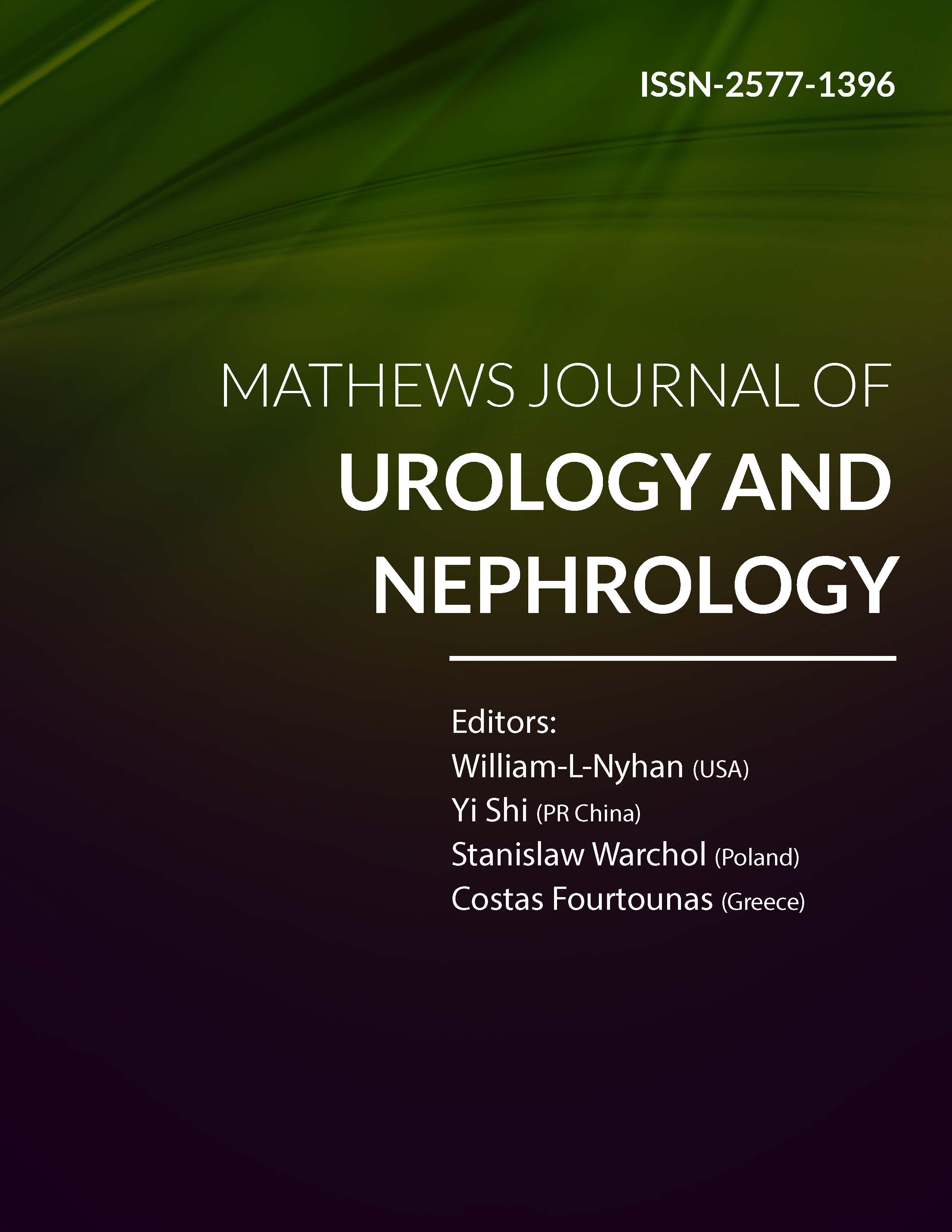
Information Links
Previous Issues Volume 1, Issue 1 - 2017
Transobturatory Tape (ToT) for the Treatment Of Stress Urinary Incontinence: Our Experience and Follow-Up Results
Selcuk Sarikaya1 *, Mehmet Ciftci2 , Cagri Senocak2 , Ridvan Ozbek D2 , Omer Faruk Bozkurt2
Corresponding Author: Selcuk Sarikaya, Gulhane Research and Training Hospital, Department of Urology, General Tevfik Saglam Caddesi, Etlik– Ankara / Turkey, Tel: +905316274819; Email: [email protected]
Received Date: 17 Oct 2017
Accepted Date: 23 Oct 2017
Published Date: 24 Oct 2017
Copyright © 2017 Sarikaya S
Citation:Sarikaya S, Ciftci M, Senocak C, Ozbek R, et all. (2017). Transobturatory Tape (ToT) for the Treatment Of Stress Urinary Incontinence: Our Experience and Follow-Up Results. Mathews J Urol Nephrol 1(1): 006.
ABSTRACT
Introduction: In this study we aimed to review the results of transobturator tape(TOT) operations retrospectively
Materials and Methods:The datas of 77 patients that were performed transobturator tape between March 2007 and July 2014 according to the diagnose of stress urinary incontinance. Voiding diary for at least 3 days were planned for the patients after history taking. Also urinalysis, urinary system ultrasonography, urodynamic study, physical examination, Q-type test 2-hours ped test were performed fort he patients.
Results:The mean age of the patients was 51,1(34-74). Mean postoperative hospital stay was 1,1(1-2). Patients without complaints were discharged on postoperative first day after the vaginal tampons and urethral catheters were taken. On postoperative third month, complaints of 55 (71,4%) patients were regressed completely. For 13 (16.9%) patients there were significantly improvements. There were no improvements for 3(3,9%) patients. There were urgency and urge incontinance complaints for 6(7,8%) patients after the surgery. There were no major complications or obturator vessel injuries.
Conclusion:Transobturator tape operation is a safe and effective method that is used for the treatment of stress urinary incontinance with higher success and patients satisfaction rates.